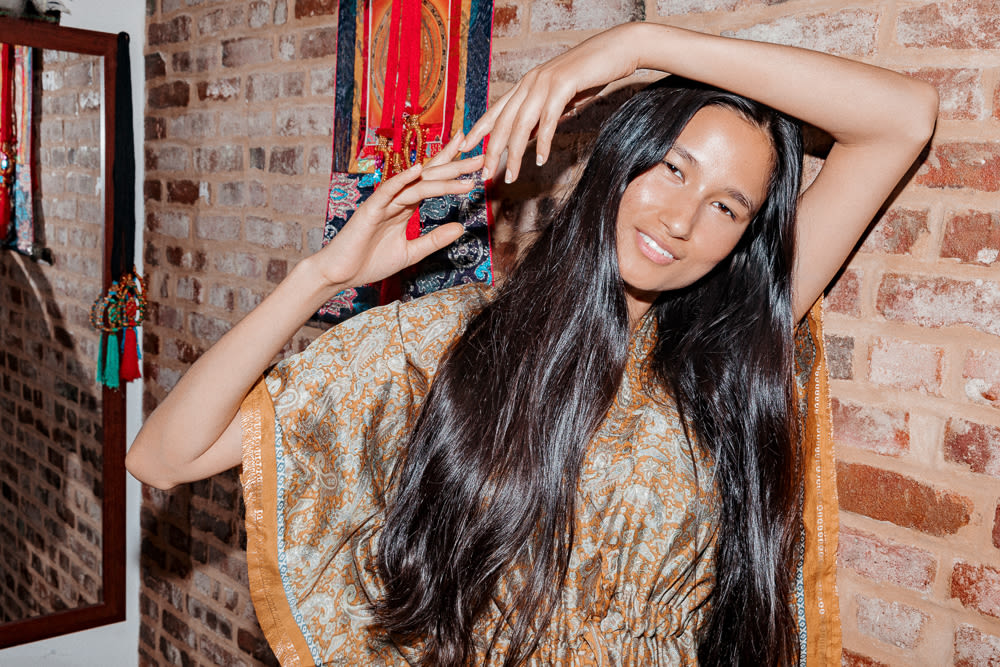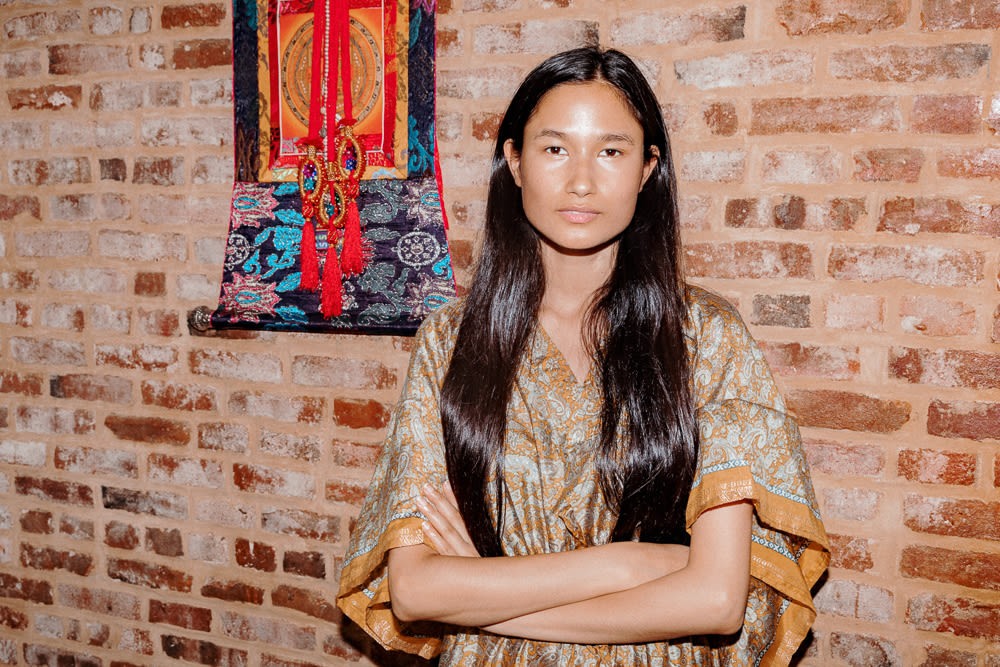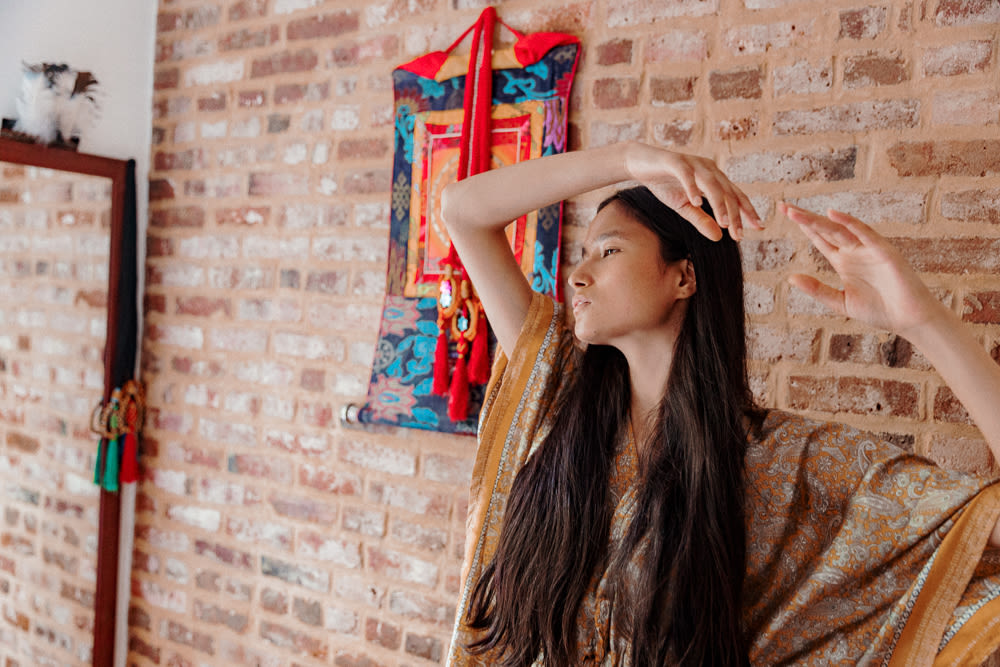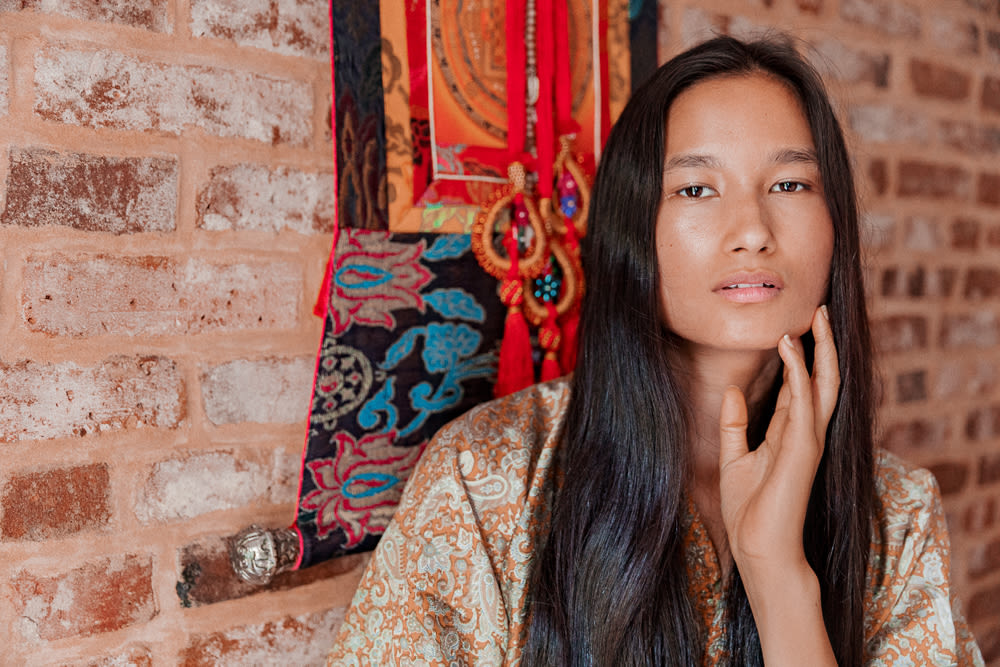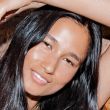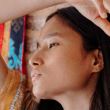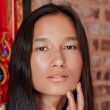“I grew up between Nepal and India, and while I was studying at college I realized I wanted to go to New York and pursue music. Modeling seemed really easy and interesting to me from the outside. Being from Nepal and India, I just felt like that was the best way to go to the United States—model to make money, and do my music on the side. [After sending] my modeling photos to a lot of agencies, I finally got hold of Wilhelmina models. I got my visa, I got my one-way ticket to America, and that was how it started. My first month [in New York] was horrifying—it was really scary, and I didn’t know anyone here. At the same time, it made me very strong and independent. Just within that month, I figured out how to save money for a train, save money for food—as models we would only get an allowance of like $100 a week, and what is that here? You could spend that easily on one Metrocard. I quickly realized that if I didn’t hustle, I was going to have to pack my bags and go back to Nepal. Also, culturally, I’m from the East, and suddenly I’m here all among Western culture and Western people. According to my experience, and I don’t know if this is how the world feels, the East is more maternal. You’re always amongst your family with a lot of security. New York City has a more paternal energy—it’s more fatherly, more business. I understood that responsibility from the first month onward. I hustled. Trust me.
Not many people wanted to work with me at first—back in 2011, there were barely any diverse models. There are still very few East-Asian models. It takes time for that change to occur, but I’m so glad that it’s starting to happen now—slowly, people are catching up to the universe. Back then I was always told no, I was always refused, I would always get canceled. In spring of 2016, Vogue India reached out to me, and were like, ‘We’re doing this story on beauty with diversity, and we would like to take one girl from every Indian subcontinent, and we’re planning to take you for Nepal.’ They picked six more girls with me—Pooja [Mor] was there, Raudha [Athif] was there, Deki [Wangmo] from Bhutan—and it was a cover story. It was out of nowhere. I had been working hard, but I hadn’t booked any big things to have a Vogue cover. After that I thought more things would come to me, but they didn’t—it was still 2016. But it did open doors for me at different agencies—I was only signed in New York and nowhere else, and suddenly I was signed in London and Paris. It’s important to remind myself not to let anyone take or give anything to me, and to take the middle path—just be in my own zone. I think that the highlights of my career are moments like that. I’m in a band called Sita Virgin—the name itself just came to me, and later on I made sense of it. Sita is a Hindu goddess, the most beautiful goddess in the Hindu mythology. And she’s from Nepal. I grew up hearing her stories, and I was like, ‘You know what, this is my alter ego when I’m on stage and I’m performing.’ I always draw from my own experience and put it in my music.
My daily ritual is that I meditate and repeat a mantra for 20 minutes when I wake up. After that I write my thought of the day, which always comes from that almost asleep, almost awake state where the most beautiful thoughts come in. Then I always write five things I’m grateful for. It could be something super small or super big—even the cake I ate yesterday. I don’t turn on my phone before that, because I feel like it’s a distraction. In the morning, I wash my face just with water and Evian spray. If I’ve been wearing too much makeup, like at the end of fashion week, I sometimes use this Cleanance Mattifying Emulsion I got in France, too. Then I put on the morning Kiehl’s serum, a moisturizer on top, and Kiehl’s sunscreen, or the Coola sunscreen that’s organic and smells like mango. I replenish my sunscreen every three hours—I’m so antsy about that. My mom started using Kiehl’s and recommended the night serum to me, and it was amazing. Like, magical—so good. I seriously use the night serum every night, and I used it in the morning too, until I realized that if there was a night serum there had to be a day serum. I think Kiehl’s really suits my skin—trust me, I have gone through so many products. I used to break out all the time. My dermatologist said it wasn’t hormonal, it was just that I had to find the right products. If I’m really breaking out, my dermatologist said to use a hydrocortisone ointment in the morning. He also said to use Differin gel at night—first wash my face with Acne Creamy Wash, which is so effective, then use Differin gel. When I’m breaking out, this is my routine—period.
My mom makes me this homeopathic face scrub—she grinds rice, orange lentils, and gram peas. It’s the best scrub ever. Every day I come back home from work and scrub all of the makeup off—it just works so perfectly. I’ll use aloe vera gel for my face too, which is calming. I’m very natural. I have some masks, like the Sabon Mud Mask which is really good, but I don’t use it all the time because of the chemicals. My mom likes to do green tea and yogurt together, and—you know when you boil rice, there’s that water left over? That water is very good for your skin. She mixes that water with green tea and yogurt, and you put it on your skin for 15 minutes. It’s super natural and really good. I also make sure that I’m very hydrated—I drink a lot of water during the day. I don’t even drink alcohol, I don’t smoke—these are the things I’m very conscious of. I drink hot water—it’s my thing. If it’s not hot water, it’s green tea. That cleans my system. Great skin is made in the kitchen—if you’re doing that every day, your skin’s going to be happy.
Nepali women are very low-key—no makeup, simple. Maybe a red lipstick and red braid ties, and that’s it. I like to do my Nepali Dhago braids, which are very special to me—they’re a symbol of strength to Nepali women. Women back in the day would wear them to look good for their husbands—red is a color that traditionally symbolizes that you’re married. For me, it’s very important to have long hair because I like to wear Dhago. I just use regular shampoo and conditioner, like Pantene. I can’t stress enough how every hair product I’ve ever used is the same—from Moroccanoil to Dr. Hauschka, it’s all the same. Some of the organic ones are actually worse because they make my hair oily. So, Pantene Pro-V works the best for me—I think it’s the Smooth and Sleek ones. I wash my hair every two weeks because I like to give it some space, and when I wash it I use L’Oréal Mythic Oil right after the shower. With all of the humidity my hair gets really frizzy and big, so it helps make my hair a little smoother—it makes it sit right, just the way it’s supposed to be. In Nepal we do a lot of hair massage. I grew up getting oil massaged into my hair every week by my mom—either it’s coconut oil or it’s mustard oil, which is really good for hair. My hair would be so beautiful after I washed it out—it needs the moisture and oil. When you wash your hair too much it gets too dry, and that’s when it starts breaking. I don’t like to blow dry my hair, so I always let it air dry, even in the winter. It takes like two hours. And I never comb my hair—except when I wear braids, sometimes I have to. For me, my red lip, a little bindi, and some Dhago would be it. Nothing extra. That’s so beautiful to me.
For skin, if I really, really have spots I put this Bobbi Brown liquid foundation on. I would do a stick, but my skin would quickly dry out and this liquid doesn’t make me break out as much as other foundations do. I use a little bit of Benefit High Beam, which is subtle—my cheekbones are so high that I don’t need much, but it just makes them shine a little bit when I turn around. If I have a party to go to or something, then I do a little bit of hairspray on an eyebrow brush to scrunch up my eyebrows. I don’t like too much mascara because I feel like it spoils the shape of my eye, but I do a little bit of MAC mascara in the blue tube, just on the ends—it’s really thin. Coola Nude Beach works on the lips, as well as a blush. I have red lipstick from Nars that I like, and I have this berry one called Liv. I think Nars has really good lipsticks.
I recently started doing cryotherapy—in the beginning I didn’t see any results and I was like, ‘Maybe this doesn’t work.’ After a week, two weeks, three weeks, the results started getting better. It’s so cold in there—so cold—that you just mentally realize how strong you are and how you can withstand anything. It gives you a better immune system—I get colds and coughs so easily. If someone has the flu next to me, I get it right away, and it’s helped with that. I go to Aerospace for boxing—it’s basically all strength training. I train with Michael, he teaches you all of the boxing moves, and then you’re also working through your core, strengthening your arms, legs—the whole package. I go there for classes every day, and I train with Michael twice a week. I use Dr. Hauschka deodorant sometimes, or when I get tired of it, this—Schmidt’s Charcoal. It’s really good. For fragrance, I have Jo Malone Wood, Sage and Sea Salt, but it’s almost empty. I love it—I only buy that one. In the winter sometimes I mix lavender and patchouli because [those oils] are much denser—I feel like they’re more for winter. Other than that, I don’t really change.”
—as told to ITG
Varsha Thapa photographed by Tom Newton in New York on August 8, 2018.
